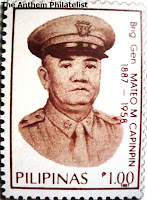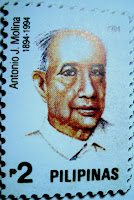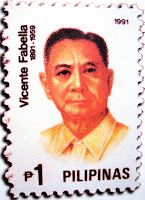Qin Shi Huang's Teracotta Army in Xian
 Some Chinese scholars labelled Emperor Qin Shi Huang as a tyrannical megalomaniac who ordered the killing of his writers and philosophers and burned books written about previous kings and rulers so that Chinese history begins with him. But these seemingly evil ways ironically resulted into today's magnificent structures (Great Wall) and discoveries. One of these great discoveries were Emperor Qin's Terra-cotta army. These thousand-years-buried treasures are located about 1.5 kilometers east of the Emperor QinShihuang's mausoleum, symbolizing the main defending force that guarded the capital before Emperor Qin died. These soldiers were to accompany him in the afterlife. Until today, no one has seen the Emperors body due to the elaborate network of traps and poisons (mercury) he designed while he was alive.
Some Chinese scholars labelled Emperor Qin Shi Huang as a tyrannical megalomaniac who ordered the killing of his writers and philosophers and burned books written about previous kings and rulers so that Chinese history begins with him. But these seemingly evil ways ironically resulted into today's magnificent structures (Great Wall) and discoveries. One of these great discoveries were Emperor Qin's Terra-cotta army. These thousand-years-buried treasures are located about 1.5 kilometers east of the Emperor QinShihuang's mausoleum, symbolizing the main defending force that guarded the capital before Emperor Qin died. These soldiers were to accompany him in the afterlife. Until today, no one has seen the Emperors body due to the elaborate network of traps and poisons (mercury) he designed while he was alive.
The Terracotta soldier were never mentioned in the historical records until Pit 1 (first exc avated area) was discovered in March 1974 by local Chinese farmers while drilling a well. During our visit, we had the opportunity to meet the farmer who discovered the site and had our special Terracotta book, which is available only in Xian, autographed by him. Then years later, archaeologists began the explorations and excavations of the Terracotta Army. On October 1, 1979 Emperor Qin's Terra-Cotta Warriors and Horses Museum was opened to the public about 35 kilometers East of Xian, China. The Terracotta Warriors and Horses Museum receives over 2,000,000 Chinese and Foreign Tourists a year with an annual ticket income of around 150 million yuan.
The Mausoleum of the First Qin Emperor was included as a World Heritage Site on the basis of Cultural Criteria I, III, IV and VI.
Criterion I. Because of their exceptional technical and artistic qualities, the terracotta warriors and horses, and the funerary carts in bronze are major works in the history of Chinese sculpture prior to the reign of the Han dynasty.
Criterion III. The army of statues bears unique testimony to the military organization in China at the time of the Warring Kingdoms (475-221 B.C.) and tha
avated area) was discovered in March 1974 by local Chinese farmers while drilling a well. During our visit, we had the opportunity to meet the farmer who discovered the site and had our special Terracotta book, which is available only in Xian, autographed by him. Then years later, archaeologists began the explorations and excavations of the Terracotta Army. On October 1, 1979 Emperor Qin's Terra-Cotta Warriors and Horses Museum was opened to the public about 35 kilometers East of Xian, China. The Terracotta Warriors and Horses Museum receives over 2,000,000 Chinese and Foreign Tourists a year with an annual ticket income of around 150 million yuan.
The Mausoleum of the First Qin Emperor was included as a World Heritage Site on the basis of Cultural Criteria I, III, IV and VI.
Criterion I. Because of their exceptional technical and artistic qualities, the terracotta warriors and horses, and the funerary carts in bronze are major works in the history of Chinese sculpture prior to the reign of the Han dynasty.
Criterion III. The army of statues bears unique testimony to the military organization in China at the time of the Warring Kingdoms (475-221 B.C.) and tha t of the short-lived Empire of a Thousand Generations (221-210 B.C.). The direct testimony of the objects found in situ (lances, swords, axes, halberds, bows, arrows, etc.) is evident. The documentary value of a group of hyper-realistic sculptures where no detail has been neglected from the uniforms of the warriors, their arms, to even the horses' halters- is enormous. Furthermore, the information to be gleaned from the statues concerning the craft and techniques of potters and bronze-workers is immeasurable.
Criterion IV. The mausoleum of Qin Shi Huang is the largest preserved one in China. I
t of the short-lived Empire of a Thousand Generations (221-210 B.C.). The direct testimony of the objects found in situ (lances, swords, axes, halberds, bows, arrows, etc.) is evident. The documentary value of a group of hyper-realistic sculptures where no detail has been neglected from the uniforms of the warriors, their arms, to even the horses' halters- is enormous. Furthermore, the information to be gleaned from the statues concerning the craft and techniques of potters and bronze-workers is immeasurable.
Criterion IV. The mausoleum of Qin Shi Huang is the largest preserved one in China. I t is a unique architectural ensemble whose layout echoes the urban plan of the capital, Xianyang, with the imperial palace enclosed by the walls of the city, themselves encircled by other walls. This capital of the Qin (to which succeeded on the present site of Xian the capitals of the Han, Sui, Tang, Ming and Qing dynasties) is a microcosm of the Zhongguo (Middle Country) that Qin Shi Huang wanted both to unify (he imposed throughout the land a single system of writing, money, weights and measures) and to protect from the barbarians that could arrive from any direction (the army which watches over the dead emperor faces outward from the tomb).
Criterion VI. The mausoleum of Qin Shi Huang is associated with an event of universal significance: the first unification of the Chinese territory by a centralized state created by an absolute monarch in 221 B.C.
t is a unique architectural ensemble whose layout echoes the urban plan of the capital, Xianyang, with the imperial palace enclosed by the walls of the city, themselves encircled by other walls. This capital of the Qin (to which succeeded on the present site of Xian the capitals of the Han, Sui, Tang, Ming and Qing dynasties) is a microcosm of the Zhongguo (Middle Country) that Qin Shi Huang wanted both to unify (he imposed throughout the land a single system of writing, money, weights and measures) and to protect from the barbarians that could arrive from any direction (the army which watches over the dead emperor faces outward from the tomb).
Criterion VI. The mausoleum of Qin Shi Huang is associated with an event of universal significance: the first unification of the Chinese territory by a centralized state created by an absolute monarch in 221 B.C.
 avated area) was discovered in March 1974 by local Chinese farmers while drilling a well. During our visit, we had the opportunity to meet the farmer who discovered the site and had our special Terracotta book, which is available only in Xian, autographed by him. Then years later, archaeologists began the explorations and excavations of the Terracotta Army. On October 1, 1979 Emperor Qin's Terra-Cotta Warriors and Horses Museum was opened to the public about 35 kilometers East of Xian, China. The Terracotta Warriors and Horses Museum receives over 2,000,000 Chinese and Foreign Tourists a year with an annual ticket income of around 150 million yuan.
The Mausoleum of the First Qin Emperor was included as a World Heritage Site on the basis of Cultural Criteria I, III, IV and VI.
Criterion I. Because of their exceptional technical and artistic qualities, the terracotta warriors and horses, and the funerary carts in bronze are major works in the history of Chinese sculpture prior to the reign of the Han dynasty.
Criterion III. The army of statues bears unique testimony to the military organization in China at the time of the Warring Kingdoms (475-221 B.C.) and tha
avated area) was discovered in March 1974 by local Chinese farmers while drilling a well. During our visit, we had the opportunity to meet the farmer who discovered the site and had our special Terracotta book, which is available only in Xian, autographed by him. Then years later, archaeologists began the explorations and excavations of the Terracotta Army. On October 1, 1979 Emperor Qin's Terra-Cotta Warriors and Horses Museum was opened to the public about 35 kilometers East of Xian, China. The Terracotta Warriors and Horses Museum receives over 2,000,000 Chinese and Foreign Tourists a year with an annual ticket income of around 150 million yuan.
The Mausoleum of the First Qin Emperor was included as a World Heritage Site on the basis of Cultural Criteria I, III, IV and VI.
Criterion I. Because of their exceptional technical and artistic qualities, the terracotta warriors and horses, and the funerary carts in bronze are major works in the history of Chinese sculpture prior to the reign of the Han dynasty.
Criterion III. The army of statues bears unique testimony to the military organization in China at the time of the Warring Kingdoms (475-221 B.C.) and tha t of the short-lived Empire of a Thousand Generations (221-210 B.C.). The direct testimony of the objects found in situ (lances, swords, axes, halberds, bows, arrows, etc.) is evident. The documentary value of a group of hyper-realistic sculptures where no detail has been neglected from the uniforms of the warriors, their arms, to even the horses' halters- is enormous. Furthermore, the information to be gleaned from the statues concerning the craft and techniques of potters and bronze-workers is immeasurable.
Criterion IV. The mausoleum of Qin Shi Huang is the largest preserved one in China. I
t of the short-lived Empire of a Thousand Generations (221-210 B.C.). The direct testimony of the objects found in situ (lances, swords, axes, halberds, bows, arrows, etc.) is evident. The documentary value of a group of hyper-realistic sculptures where no detail has been neglected from the uniforms of the warriors, their arms, to even the horses' halters- is enormous. Furthermore, the information to be gleaned from the statues concerning the craft and techniques of potters and bronze-workers is immeasurable.
Criterion IV. The mausoleum of Qin Shi Huang is the largest preserved one in China. I t is a unique architectural ensemble whose layout echoes the urban plan of the capital, Xianyang, with the imperial palace enclosed by the walls of the city, themselves encircled by other walls. This capital of the Qin (to which succeeded on the present site of Xian the capitals of the Han, Sui, Tang, Ming and Qing dynasties) is a microcosm of the Zhongguo (Middle Country) that Qin Shi Huang wanted both to unify (he imposed throughout the land a single system of writing, money, weights and measures) and to protect from the barbarians that could arrive from any direction (the army which watches over the dead emperor faces outward from the tomb).
Criterion VI. The mausoleum of Qin Shi Huang is associated with an event of universal significance: the first unification of the Chinese territory by a centralized state created by an absolute monarch in 221 B.C.
t is a unique architectural ensemble whose layout echoes the urban plan of the capital, Xianyang, with the imperial palace enclosed by the walls of the city, themselves encircled by other walls. This capital of the Qin (to which succeeded on the present site of Xian the capitals of the Han, Sui, Tang, Ming and Qing dynasties) is a microcosm of the Zhongguo (Middle Country) that Qin Shi Huang wanted both to unify (he imposed throughout the land a single system of writing, money, weights and measures) and to protect from the barbarians that could arrive from any direction (the army which watches over the dead emperor faces outward from the tomb).
Criterion VI. The mausoleum of Qin Shi Huang is associated with an event of universal significance: the first unification of the Chinese territory by a centralized state created by an absolute monarch in 221 B.C.






